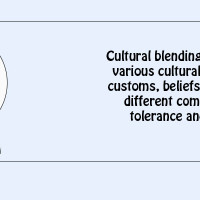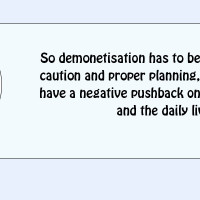- Wednesday, 29 October 2025
Social Protection Against Poverty
Poverty has still remained our major socio-economic problem. About a fourth of Nepalis is in absolute poverty as measured by an official survey.
It is a multidimensional problem. It is the impact of malfunctioning in different sectors of our economy and society. Bad politics, bad economics, bad governance, disasters, and pandemics all generate, maintain, and increase poverty in one way or the other.
As the roots of poverty are different and many, so are its solutions. The persistence of poverty is a challenge to development efforts and more broadly to our civilization. Philosopher, revolutionary, poet, and sage Sri Aurobindo has stated that “the existence of poverty is the proof of an unjust and ill-organized society.” In this light, this article attempts to review and discuss the poverty research studies on Nepal in the last 10 years.
Research on poverty in Nepal is basically of two types. The first strand of poverty research focuses on how to measure or count poverty. This section of research questions government data on the extent, depth, and severity of poverty.
It also questions the methodology of conventional poverty measurements, such as the household survey and its questionnaire.
There is evidence of substantial changes in poverty rates with the slight changes in the recall period. Poverty research in this broad category also explores different dimensions of poverty: absolute, relative, unidimensional, multidimensional, national, and international.
Independent variables
The second section of poverty research is focused on the ways and means to tackle poverty. Here researchers identify various independent variables that influence poverty in some way.
They could be income, inequality, education, family size, community, caste, ethnicity, religion, capability, asset ownership, social protection, inclusion/exclusion, etc. It has been argued that influencing these independent variables in some way by public policy intervention leads to a reduction in various dimensions of poverty.
On poverty measurement, Nepal’s Central Bureau of Statistics (CBS) conducted a household Living Standard Survey (LSS) in 2010/11 and found out the extent of poverty at 25 percent. It follows the standard income/consumption approach to measure poverty.
According to which less than about Rs. 52 per day per person would lead to poverty in Nepal. In the absence of subsequent rounds of LSS, the government has still been following the same income threshold for poverty counting in the country. The latest extent of poverty in Nepal, according to this approach, is 18.6 percent as reported in the 15th plan document.
Another alternative measure of poverty has been suggested by UNDP/Oxford University. This measure is known as multidimensional which considers 10 indicators to calculate the poverty rate instead of only the income indicator used by the traditional official measures.
These 10 indicators are grouped under the following three parameters: (1) health (child mortality, nutrition), (2) education (years of schooling, enrollment), and (3) living standards (water, sanitation, electricity, cooking fuel, floor, assets). It first identifies which of these 10 deprivations each household experiences and then specifies households as poor if they suffer deprivations across one-third or more of the weighted indicators.
This is obviously a more holistic view of poverty. The 2019 data analysis shows that the latest extent of poverty in Nepal as measured by this approach is 17.4 percent, meaning that about five million Nepalis are multidimensionally poor.
On poverty reduction in Nepal, various researchers have looked at poverty from different angles. Some researchers have attributed poverty reduction to foreign employment and its associated remittance income. Using two rounds of nationally representative household survey data, they measure the impact on poverty reduction of local and international migration for work.
They find that poverty reduction can be attributed to migration and remittances. This research has also shown that international work-related migration was more powerful in poverty reduction than domestic migration. It has been recommended that strategies for economic growth and poverty reduction in Nepal should consider aspects of the dynamics of domestic and international migration.
Another set of researchers has explored the contribution of cooperatives in reducing poverty. They have demonstrated that, by organizing small groups of poor people, cooperatives have empowered their members, and provided technical support and credit for productive activities, thereby helping them come out of poverty.
Some researchers have investigated the positive role of income from agriculture, forestry, tourism and other natural and environmental resources in poverty reduction as many poor households rely on these resources for their livelihoods. They find that pro-poor and productive management of natural resources can reduce poverty substantially across the country.
Economic growth
Others have looked at the contribution of economic growth and inequality to poverty. They find a positive causal relationship between growth and poverty reduction (high growth leads to a reduction in poverty reduction) whereas a negative relationship between inequality and poverty (high inequality leads to more poverty).
Some researchers, including myself, have studied the contribution of social protection in reducing all dimensions of poverty. We find that both pro-poor and universal social protection, as measured by social protection expenditure, is associated with a reduction in absolute, relative and multidimensional poverty. My research has also demonstrated that social protection is much more powerful in reducing all forms of poverty than economic globalization.
To conclude, poverty is still persistent in Nepal. Various dimensions of poverty affect a large section of our population. It also marks injustice and bad governance. This demands more reliable measurement of poverty so that the actual extent of poverty can be understood. Government should take stock of recent research on poverty reduction to formulate evidence-based anti-poverty policies and programs in different sectors of the economy, thereby ending all forms of poverty as stated in the Sustainable Development Goals 1.
(Dr. Bhusal works at the National Planning Commission. Views here are his personal.)

















